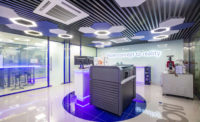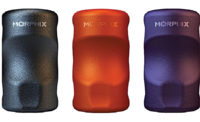As staffing shortages continue to impact productivity and quality in manufacturing, more and more companies are finding that documented cost reduction (DCR) programs can be helpful in identifying better, more efficient ways to operate and meet customer demand.
One example involves commercial refrigeration equipment maker Delfield, a Welbilt brand. Based in Mt. Pleasant, MI, Delfield makes refrigerators, freezers, cold pans and prep tables for commercial kitchens. Quality and production managers at Delfield recently found ways to reduce costs and better control braze quality across several plant locations by partnering with Harris Products Group on a DCR program. Harris makes brazing and soldering alloys and torches, and gas pressure regulation equipment.
DCR is an in-depth look at every aspect of a particular process, with the goal of uncovering opportunities for quality improvements and cost savings. Production and quality managers aren’t necessarily aware of all the options that are available in terms of equipment and services that could make a difference to the bottom line, which is why a DCR from an outside firm is so beneficial.
To launch the DCR for Delfield, Harris staff visited the company’s manufacturing facilities on several occasions, reviewing every step and piece of equipment used in the brazing of refrigerant coils, including fuel gases, alloys, torches, operator performance and training.
Harris identified four areas of improvement, which they summarized in a report. Recommendations included standardize torch flame settings across several company locations, switch to alternate fuel (propane), convert to a high-silver brazing alloy to reduce the chance of valve failures, and use appropriate brazing torch tips to optimize flame performance.
Delfield implemented all recommendations and soon began reaping the benefits.
“We now have standardized braze quality and repeatability across three different locations, while spending fewer resources on training and set-up,” says Rick Waldorf, quality manager at Delfield. “We’ve also reduced gas fuel costs. All these advantages help us deliver the best durable fabrication and refrigeration products to our customers.”
The Perfect Flame for Brazing
Delfield engineers know that the quality of brazed joints in refrigeration equipment is critical in preventing the leaking of costly refrigerants as well as protecting food safety. The brazed joints must withstand vibration, pressure and other conditions.
Standardizing the brazing process across three Delfield facilities has been an important outcome from the DCR that has allowed the company to achieve repeatable brazing results. This is possible due to the Harris Perfect Flame, a gas delivery system designed for high-production brazing operations. Built-in software analyzes the flame, measuring chemistry, flow rates, temperature, BTU and flame types to achieve the ideal flame for the particular brazing project being performed.
These settings, which are defined by Delfield’s production management, are stored and can be reproduced anywhere throughout Delfield’s operations where a Perfect Flame has been installed. Brazing staff simply select the project setting, light the torch, and then proceed to braze without the need to make any adjustments to their torch settings.
“We now have more peace of mind knowing that the Perfect Flame is helping us produce the highest quality brazed parts possible,” Waldorf says. “Having an engineered flame that is repeatable at all of our workstations, at three different geographical locations, has considerably reduced the possibility of brazed joint issues which could lead to leaks.”
Training on a New Technology
The quality of a brazed joint can vary widely depending on the experience and skills of the technician, but with the new system in place, Delfield has been able to drastically reduce braze inconsistencies seen with newer trainees while also saving time on the production floor.
With guidance from a technical team at Harris, Delfield initially implemented the Perfect Flame system at one location, and then at two additional sites. Harris sent staff to each facility and conducted training sessions to make sure the process went smoothly.
Waldorf is keenly aware that introducing new technology can backfire if employees are opposed to it, and he did have concerns that this could happen with the new brazing process and equipment being introduced.
“Many of our operators have been here a long time and are proud of the work they do. As it turned out, they were very receptive, especially when they saw how it saves setup time and reduces training time for new brazers,” he says. “There’s not a lot they have to do to prepare the torch.”
Besides not having to adjust the flame every time they lit the torch, production staff also saw the benefits of improved workflow and a new tool to help them succeed in their brazing work.
Delfield has a dozen or more workstations at each of their locations, with at least six different flame settings required.
“We tailored the Perfect Flame settings around the more seasoned operators’ preferences, as well as the applications and the temperatures required. We were able to determine the best flame for each project,” Waldorf says.
Waldorf says the time savings combined with fewer repairs or re-dos needed internally before being shipped have made the partnership with Harris a win.
“Quality brazing is critical to a long-lasting and leak-free refrigerant system, so it’s always top of mind at our company,” Waldorf says.
Saving Money With an Alternate Fuel
The Harris Products Group recommended switching from acetylene to either propane or propylene. Delfield decided on propane. Converting to an alternate fuel not only saves money but also improves heat transfer to joints. Propane is also a safer, more stable gas than acetylene.
“Propane has a cleaner flame and doesn’t leave soot,” Waldorf says. “The propane flame wraps around the joint, giving you a better braze. Acetylene is a direct hit, with unequal distribution of heat. Switching to propane has been a real benefit.”
Propane comes in larger tanks so fewer change-outs are needed. One propane cylinder provides the same amount of BTUs as five acetylene cylinders.
“That’s five less trips to bring a tank out, so it really saves time on the production floor,” Waldorf says.
Switching to alternate fuels isn’t always easy. It’s common for companies to struggle through an implementation period due to the trial and error that comes with operators trying to replicate the acetylene flames they were used to. But the Perfect Flame eliminates this costly time period and training because operators can select the saved flame setting for the torch for each job. Perfect Flame gives them the flame they need without having to figure out how to mix the gases.
Proper Torches and Tips
With the switch from acetylene to propane, new torches and tips were needed. Harris recommended a torch that is lightweight and less cumbersome than the torch used previously.
One of the learning curves with propane vs. acetylene is the size of the flame. Acetylene has a shorter, tighter flame while propane has a longer, wavier flame. The majority of the BTU’s with propane are further off the tip, outside of the inner cone. Acetylene is hottest closest to the tip.
After in-class training, hands-on training and some trial and error, operators adapted to the new flame characteristics. Harris worked with the customer to find a tip that would shorten the propane flame since the majority of brazing was done inside the unit, close to heat-sensitive parts.
Switching to a High-Silver Alloy
Prior to making a recommendation on the type of alloy Delfield should use, Harris brought multiple valve samples to its in-house metallurgical lab to evaluate brazed joints.
In the braze lab, Harris staff replicated the flame used in the Delfield plant. Following this testing, Harris evaluated cutaways of the brazed joints. This led to the recommendation to use a flux-cored silver alloy to ensure the highest quality brazed joint.
Delfield made the recommended switch from a 5 percent silver alloy to Harris’ Safety-Silv 50N flux-cored rod, which reduces the potential for failures on thermal expansion valves.
Expanded Brazing Training
As part of the DCR program for Delfield, Harris created a formal set of brazing procedures for operators that includes training on the Perfect Flame equipment as well as introduction to brazing classes onsite at Delfield’s multiple locations. The Harris training, which is completed annually, includes theory, principles and hands-on instruction in the braze process to give newer technicians a better understanding of their craft.
With turnover being a common problem in the industry, the training of new brazers needs to be ongoing and comprehensive, but also efficient. That’s what Harris has been able to bring to Delfield with onsite training, and they’re seeing the benefits.
The partnership between the two companies has been successful due to Delfield’s commitment to quality and continuous improvement. By taking an in-depth look at their brazing processes for refrigerant systems, Delfield has addressed an important need in manufacturing: the ability to produce repeatable, quality brazing that will stand the test of time. The company has also reduced costs and improved workflow, all while keeping quality as a top priority.
ASSEMBLY ONLINE
For more information on brazing, visit www.assemblymag.com to read these articles:
Brazing for High-Power Electronics
Induction Brazing
50 Years of ASSEMBLY: Brazing and Soldering Are Still Old School



